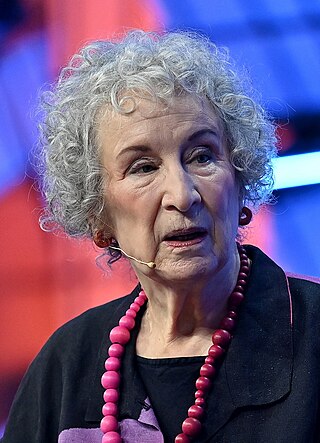
Margaret Eleanor Atwood is a Canadian poet, novelist, literary critic, essayist, teacher, environmental activist, and inventor. Since 1961, she has published 18 books of poetry, 18 novels, 11 books of nonfiction, nine collections of short fiction, eight children's books, two graphic novels, and a number of small press editions of both poetry and fiction. Atwood has won numerous awards and honors for her writing, including two Booker Prizes, the Arthur C. Clarke Award, the Governor General's Award, the Franz Kafka Prize, Princess of Asturias Awards, and the National Book Critics and PEN Center USA Lifetime Achievement Awards. A number of her works have been adapted for film and television.

Lucy Maud Montgomery, published as L. M. Montgomery, was a Canadian author best known for a collection of novels, essays, short stories, and poetry beginning in 1908 with Anne of Green Gables. She published 20 novels as well as 530 short stories, 500 poems, and 30 essays. Anne of Green Gables was an immediate success; the title character, orphan Anne Shirley, made Montgomery famous in her lifetime and gave her an international following. Most of the novels were set on Prince Edward Island, and those locations within Canada's smallest province became a literary landmark and popular tourist site – namely Green Gables farm, the genesis of Prince Edward Island National Park. She was made an officer of the Order of the British Empire in 1935.

Canadian literature is the literature of a group of multicultural communities, written in languages including Canadian English, Canadian French, and Indigenous languages. Influences on Canadian writers are broad both geographically and historically, representing Canada's diversity in culture and region.

The Handmaid's Tale is a futuristic dystopian novel by Canadian author Margaret Atwood published in 1985. It is set in a near-future New England in a patriarchal, totalitarian theonomic state known as the Republic of Gilead, which has overthrown the United States government. Offred is the central character and narrator and one of the "Handmaids": women who are forcibly assigned to produce children for the "Commanders", who are the ruling class in Gilead.

Chicago is a 2002 American musical black comedy crime film based on the 1975 stage musical of the same name which in turn originated in the 1926 play of the same name. It explores the themes of celebrity, scandal, and corruption in Chicago during the Jazz Age. The film stars an ensemble cast led by Renée Zellweger, Catherine Zeta-Jones, and Richard Gere. Chicago centers on Roxie Hart (Zellweger) and Velma Kelly (Zeta-Jones), two murderers who find themselves in jail together awaiting trial in 1920s Chicago. Roxie, a housewife, and Velma, a vaudevillian, fight for the fame that will keep them from the gallows. The film marks the feature directorial debut of Rob Marshall, who also choreographed the film, and was adapted by screenwriter Bill Condon, with music by John Kander and lyrics by Fred Ebb.
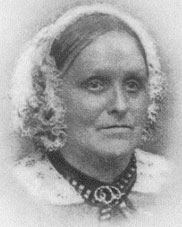
Susanna Moodie was an English-born Canadian author who wrote about her experiences as a settler in Canada, which was a British colony at the time.

Events from the year 1843 in Canada.

Sarah Ellen Polley is a Canadian filmmaker, writer, political activist and retired actress. She first garnered attention as a child actress for her role as Ramona Quimby in the television series Ramona, based on Beverly Cleary's books. This subsequently led to her role as Sara Stanley in the Canadian television series Road to Avonlea (1990–1996). She has starred in many feature films, including The Adventures of Baron Munchausen (1988), Exotica (1994), The Sweet Hereafter (1997), Guinevere (1999), Go (1999), The Weight of Water (2000), No Such Thing (2001), My Life Without Me (2003), Dawn of the Dead (2004), Splice (2009), and Mr. Nobody (2009).

Doctor Glas is a 1905 epistolary novel by Hjalmar Söderberg which tells the story of a physician in 19th-century Sweden who deals with moral and love issues.
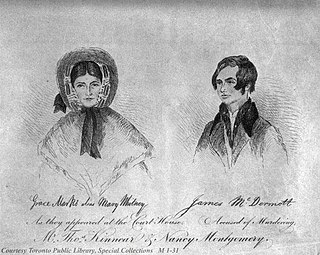
Grace Marks was an Irish-Canadian maid who was involved in the 1843 murder of her employer Thomas Kinnear and his housekeeper, Nancy Montgomery, in Richmond Hill, Ontario. Her conviction for the murder of Kinnear was controversial and sparked much debate about whether Marks was actually instrumental in the murder or merely an unwitting accessory. Marks was the subject of Margaret Atwood's historical fiction novel Alias Grace and its adaptations in other media.

Cat's Eye is a 1988 novel by Canadian writer Margaret Atwood about fictional painter Elaine Risley, who vividly reflects on her childhood and teenage years. Her strongest memories are of Cordelia, who was the leader of a trio of girls who were both very cruel and very kind to her in ways that tint Elaine's perceptions of relationships and her world — not to mention her art — into her middle years. The novel unfolds in mid-20th century Canada, from World War II to the late 1980s, and includes a look at many of the cultural elements of that time period, including feminism and various modern art movements. The book was a finalist for the 1988 Governor General's Award and for the 1989 Booker Prize.

The Penelopiad is a novella by Canadian author Margaret Atwood. It was published in 2005 as part of the first set of books in the Canongate Myth Series where contemporary authors rewrite ancient myths. In The Penelopiad, Penelope reminisces on the events of the Odyssey, life in Hades, Odysseus, Helen of Troy, and her relationships with her parents. A Greek chorus of the twelve maids, who Odysseus believed were disloyal and whom Telemachus hanged, interrupt Penelope's narrative to express their view on events. The maids' interludes use a new genre each time, including a jump-rope rhyme, a lament, an idyll, a ballad, a lecture, a court trial and several types of songs.

Sarah Lynn Gadon is a Canadian actress. She began her acting career guest-starring in a number of television series, such as Are You Afraid of the Dark? (1999), Mutant X (2002), and Dark Oracle (2004). She also worked as a voice actress on various television productions. Gadon gained recognition for her roles in David Cronenberg's films A Dangerous Method (2011), Cosmopolis (2012), and Maps to the Stars (2014). She also starred in Denis Villeneuve's thriller Enemy (2013), the period drama Belle (2013), and the action horror film Dracula Untold (2014).

A Good House is the first novel by Canadian writer Bonnie Burnard, published by Picador in 1999 and later by Henry Holt and Company in United States of America. It was the winner of that year's Scotiabank Giller Prize. The novel narrates the story of a family in three generations, five houses starting from 1949 until 1997.
"Happy Endings" is a short story by Margaret Atwood. It was first published in a 1983 Canadian collection, Murder in the Dark, and highlighted during the nomination period for the 2017/2018 Galley Beggar Press Short Story Prize.
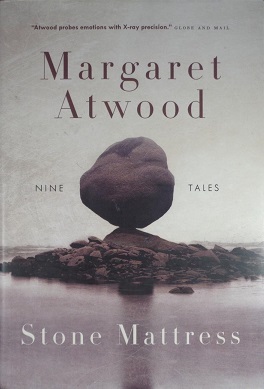
Stone Mattress is a 2014 short fiction collection by the Canadian author Margaret Atwood. Atwood describes the pieces in the collection as "tales" rather than short stories, as they draw from the mythical and fantastical aspects associated with fables and fairy tales, rather than from conventional literary realism.
Alias Grace is a Canadian drama television miniseries directed by Mary Harron and written by Sarah Polley, based on Margaret Atwood's 1996 novel of the same name. It stars Sarah Gadon, Edward Holcroft, Rebecca Liddiard, Zachary Levi, Kerr Logan, David Cronenberg, Paul Gross, and Anna Paquin. The series consists of six episodes. It premiered on CBC on September 25, 2017, and appeared on Netflix on November 3, 2017.
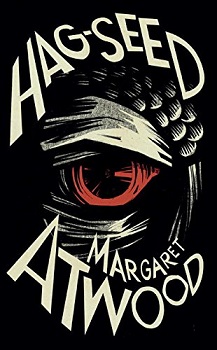
Hag-Seed is a novel by Canadian writer Margaret Atwood, published in October 2016. A modern retelling of William Shakespeare's The Tempest, the novel was commissioned by Random House as part of its Hogarth Shakespeare series.

The Testaments is a 2019 novel by Margaret Atwood. It is the sequel to The Handmaid's Tale (1985). The novel is set 15 years after the events of The Handmaid's Tale. It is narrated by Aunt Lydia, a character from the previous novel; Agnes, a young woman living in Gilead; and Daisy, a young woman living in Canada.
















